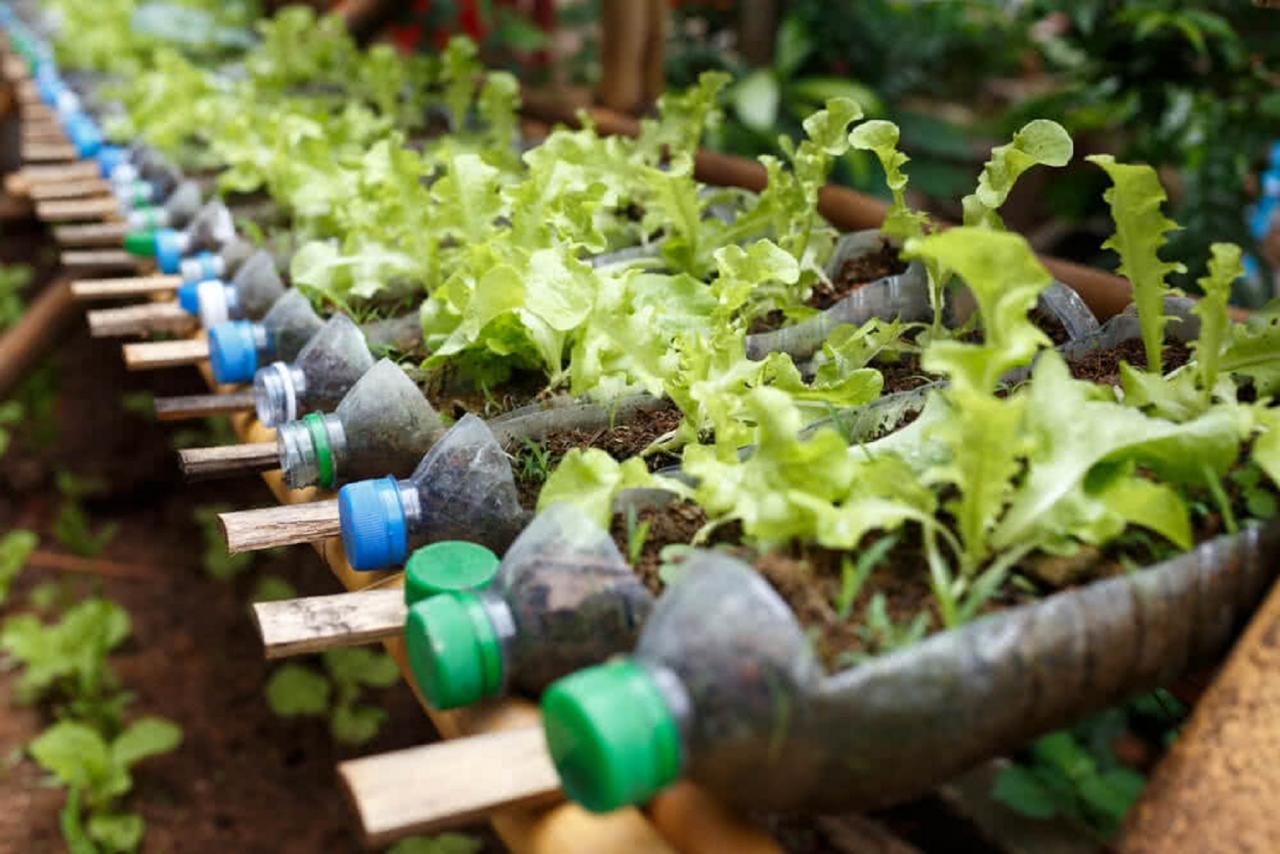We hear about nothing but plastic these days, how the sea has complete rafts of the stuff, we see masses floating down the rivers of underdeveloped countries and even our own beaches of Mallorca are so cluttered that groups are getting together to attempt to clear them. We are all aware of this invasion and no matter how much we recycle there is little we can do about our daily shopping where fruit come already weighed up in little plastic punnets, meat and fish are laid out on a plastic tray and wrapped and re-wrapped with cling film not to mention all sizes of bottles for our drinks.
So... what has all this to do with gardening ?
I admit I have mentioned some of this from time to time but today I want to dedicate our whole page to plastic in the garden. In this case it is all going to refer to our use, or better said re-use of all those containers that arrive in the kitchen with our weekly shop.
As it is planting time lets take those little fruit punnets that already have drainage holes in the botton, fill them with good soil or compost if you have any, and for those balcony gardeners a little sack of prepared potting soil will fill these same fruit trays. Sprinkle the seeds, cover and there you have a ready made seed tray. You may even have a similar plastic box with a lid attatched, once closed you have made yourself a mini incubator. Now the drip tray comes into its own. Any size of the meat or fish trays will come without holes. Some of the bigger trays will take several smaller pots standing side by side and when watered the overflow will be caught in it. In some cases the pots prefer to be watered from the bottom so these plastic trays will fill the role drip trays ...

Smaller pots like yogurt pots or egg trays may well be used for larger seeds like peas , beans broad beans, marrow cucumber and the like that are easy to handle on a one to one basis. they may need a little drainage hole punched in the bottom. There will always be some shape or size of plastic container to start off with and then a size larger to transplant out the seedlings when they need more room before you actually transplant them out into the open ground when the the risk of adverse weather has passed. These individualy started off seedlings will slip out of the plastic pot without breaking the soil away from the newly forming root system so will never be aware that it has been man-handled.
Now to the larger plastic containers. Five and eight litre water bottles have their own uses in the garden. cut the neck off and up-end the bottle over the seedlings forming a miniature greenhouse for each plant. Be sure that the plant is well centred and does not touch the plastic sides, the ground will be moist enough for water to reach each seedling at this time of year or clear a ltttle gully between rows to fill with water from time to time. The same can be used with the one and a half or two litre water bottles but they don’t leave quite so much room for the seedlings to fill out but are just as useful to start them off.

Another use for this sized bottle is to fill it with water, up-end it and position the open end into the soil beside plants as they mature. Just a little puncture in the upturned base will help the water to drip through as the moist ground allows it.
I did mention the sacks that some fruit and vegetables are sold in, these could well be made of open work plastic meshing. I use one of these to hang herbs like Sage that need to dry out before rubbing down into fine powder for making sage and onion stuffing.
I am sure many of us will have found the potatoes in the vegetable rack forming shoots. Dont throw them, Find a bucked sized plastic container, half fill with soil and put a handfull of these self sprouting potatoes in and cover with a little soil. As the green shoots begin to apear above the soil carefully cover with more soil as if ‘earthing up’ the rows of potatoes in the garden. as the bucket fills up with soil the potatoes will be busy below ground and when ready to harvest you will find you have a bucket full of baby new potatoes all ready to boil with a sprig or two of fresh mint and then toss in a little butter when cooked and strained, doesn’t it make your mouth water!
Oh dear and all to do with recycling a few plastic trays from the supermarket!
TOP TIPS
- Smaller pots like yogurt pots or egg trays may well be used for larger seeds like peas, beans broad beans, marrow cucumber and the like that are easy to handle on a one to one basis.
- Five and eight litre water bottles have their own uses in the garden: cut the neck off and up-end the bottle over the seedlings forming a miniature greenhouse for each plant.




No comments
To be able to write a comment, you have to be registered and logged in
Currently there are no comments.